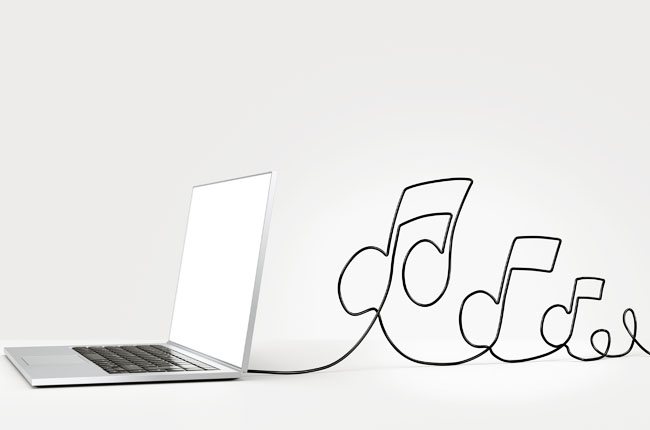Fifteen years ago, a record label would pitch its new releases to a record store or chain like Tower Records. Ten years ago, they were pitching their priority releases to digital download stores like iTunes. Now they pitch streaming services.
Like the preceding types of promotion, playlist promotion comes down to relationships. Labels, artist management companies and marketing consultants not only build relationships with independent playlist owners, but they have often long-standing relationships with streaming company editors and executives. Some can at least get their email pitches read. Others can have their artists drop by companies’ offices to meet the staff.
“We work closely with streaming services and let them know what’s going on with our music,” Daniel Kruchkow, CMO, Crush Music. “Sometimes they grab on, sometimes they don’t — just like anything else.”
Management companies and labels have these conversations on a regular basis. Although streaming promotion doesn’t follow the promotion in a traditional album cycle, it’s no different than trying to convince a retailer to get behind an album, or a radio programmer to put a song into rotation, says a major-label marketing executive. “They’re a curator and we have to convince them our artists are awesome.”
Why is there so much effort to curry the favor of streaming services? Playlists are a valuable gateway to music fans. Like social media, playlists are viral in nature; a track’s streams will spike after it’s added to a popular playlist. Listeners will add the song to their own playlists and their followers might add the song to their playlists. An artist and a song’s popularity can grow exponentially.
Promotion practices have become more aggressive as a result. As Billboard has detailed, “playola” has become a part of playlist promotion. Entire playlists have been purchased in order to put certain songs in front of their followers. In other cases, third-party playlist owners are paid money either for placement or indirect influence (a consultancy fee). While not illegal, playola exists in an ethical gray area where listeners are unaware of the influence and the advantage can go to the larger spender.
But this article is not about playola. Streaming services don’t take money for placement on the playlists they own and operate. Their editors and executives communicate with labels, management companies and independent promoters and select the tracks that best fit a playlist’s theme.
Spotify’s own playlists have the greatest reach. These are the branded, themed playlists crafted by in-house editorial team. Check out Spotify’s “Browse” section at you’ll find playlists posted for a particular time (Afternoon Groove) and day of week (#Throwback Thursday). Followers often number in the seven digits. Today’s Top Hits has 6.0 million followers. RapCavier and Hot Country have 2.2 million and 1.8 million followers, respectively. Smaller playlists still have big footprints. Spotify’s Acoustic Pop, a collection of laid-back songs by popular artists from Rihanna to The Fray, has 151,000 followers.
When pushing a single by Robert DeLong, Glassnote used early support at SiriusXM to pitch the song to Spotify. Early streaming numbers and a visit to the Spotify office, including a performance, helped DeLong get on Spotify’s Viral and Alternative Hits charts. The resulting streaming numbers led to more radio play and bigger playlists. “It’s no different than if you and I were talking twenty years ago about MTV and VH1. You can’t just make the video. You have to go and meet with the people,” says Glassnote Records founder Daniel Glass.
“They want to stay informed,” says Jay Gilbert, a digital strategy consultant. “Give them the story, tour dates, interviews, those kinds of things help. Advertising that click-through to that playlist or album artist on Spotify. Apple wants you to support Connect, Apple Music and the radio vertical. Next thing you know you’re in the pole position in a few playlists. You scratch their back, they’ll scratch yours. Not that they’d do crap. They’re editorial decisions.”
Some artists’ best chances are smaller playlists. A developing artist that gets added to 100 small playlists with 5,000 to 100,000 followers might get 100,000 streams over a few months. That in turn might spark the interest of larger playlist creators and will increase the chances of getting onto a Spotify or major label playlist.
The trick is finding the right playlists. “Just because the technology is available doesn’t make everyone a Picasso,” says the major-label marketing executive. “Curation has been important throughout radio, TV, blogs and now playlists. The most important thing is identifying who the true curators are and establishing a really strong relationship with them.”
Marketers need not depend solely on traditional promotion. Artist-curated playlists are a do-it-yourself approach to gaining followers and streams. A playlist created under an artist’s Spotify account can reflect the artist’s personality and taste in music. Major Lazer effectively used the Major Lazer and Friends Radio playlist — currently with 143,000 followers — to gain momentum before releasing Peace is the Mission.
It never hurts to make a digital music service happy. Driving traffic back to the streaming service could encourage the service to bring listeners’ attention to the artist’s playlist. “Spotify loves artist-created or curated playlists,” says Gilbert. “When you create one, and have the artist go on social and push people, Spotify loves that.”
And these self-made playlists have a built-in promotion factor. A listener that follows a playlist and opts to receive updates will receive push notifications every time the playlist is updated. The same goes for playlists created by record labels. “Whenever you have new music, the follower is notified. These days, being alerted to a playlists you subscribe to is pretty powerful. It’s real straightforward, real direct,” says Kruchkow.


